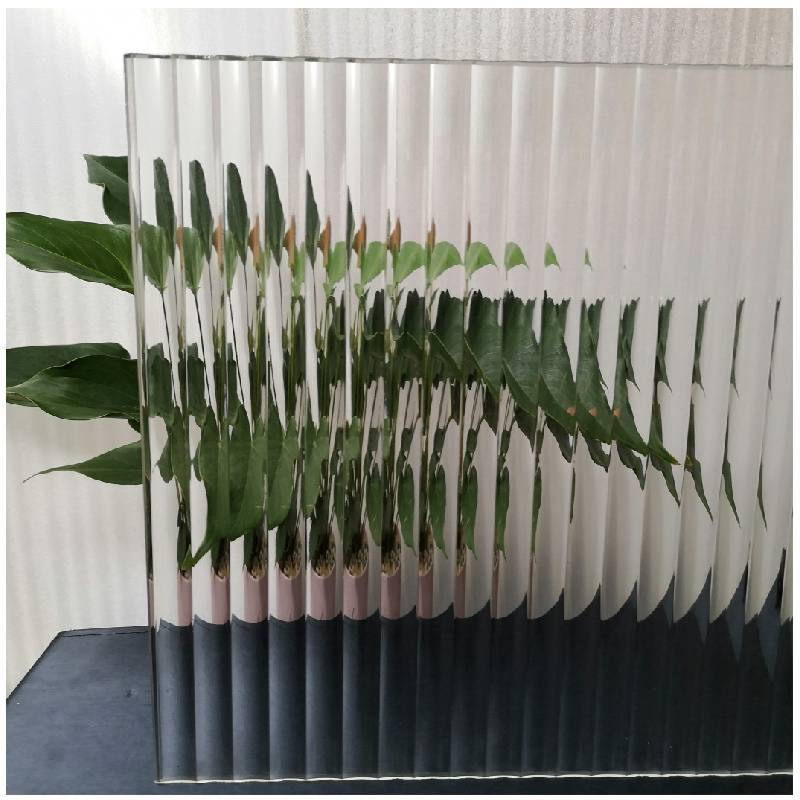The Marvels of Float Glass Plate A Modern Innovation in Glass Technology
In the realm of manufacturing and design, few materials have been as transformative and versatile as glass. Among the various types of glass products, float glass plate stands out due to its unique manufacturing process and outstanding properties. Understanding float glass plate is essential for anyone interested in architecture, interior design, or materials science.
The Manufacturing Process
Float glass is produced through a specialized process invented in the 1950s by Sir Alastair Pilkington, known as the Pilkington process. This method involves floating molten glass on top of molten tin. By doing this, the glass achieves a flat, uniform thickness with a remarkably smooth surface. The process begins with raw materials, primarily silica sand, soda ash, and limestone, which are melted at very high temperatures in a furnace. Once molten, the glass is poured onto a bath of liquid tin.
The buoyant property of the molten tin allows the glass to spread into a perfectly flat sheet. As it cools, the glass maintains a uniform thickness, typically ranging from 2mm to 19mm, depending on the intended application. This precision in thickness is unique to float glass and is one of the reasons it is so widely used across various industries.
Properties and Benefits
Float glass exhibits several advantageous properties. First and foremost is its clarity. The method of production ensures that float glass is free from bubbles and imperfections, providing excellent optical qualities. This makes float glass ideal for applications where transparency is critical, such as windows, doors, and display cases.
Another significant benefit of float glass is its smooth surface. The quality of the surface not only enhances the aesthetic appeal of products made from float glass but also makes it exceptionally easy to clean and maintain. As a result, it is often used in environments that require high hygiene standards, such as hospitals and laboratories.
Additionally, float glass plate offers significant strength and durability
. When treated correctly, it can withstand various environmental stresses, making it suitable for both residential and commercial applications. Furthermore, float glass can be easily processed into different forms, including laminated, tempered, or coated glass, expanding its versatility in various settings.
float glass plate
Applications of Float Glass Plate
The applications of float glass plate are nearly limitless. In the architectural domain, float glass is a go-to choice for large-scale windows, curtain walls, and facades. Its ability to provide unobstructed views while allowing natural light to penetrate makes it a favorite among architects and builders.
In interior design, float glass is utilized in furniture, decorative partitions, mirrors, and even glass balustrades. Its aesthetic appeal allows designers to create elegant and modern spaces, enhancing both functionality and style. Moreover, float glass plates can be printed or tinted, offering additional customization options for branding or privacy.
In the automotive industry, float glass is used for windshields and windows, where clarity and safety are paramount. The glass undergoes toughening processes to enhance its strength, providing necessary protection for passengers.
The Future of Float Glass Plate
As technology advances, the float glass industry continues to evolve. Innovations such as energy-efficient coatings are being developed, allowing float glass to contribute to sustainable building practices. These coatings can reflect heat and reduce energy consumption in buildings, making them more environmentally friendly.
Moreover, the integration of smart glass technology—such as electrochromic glass that can change its tint with electricity—opens up new possibilities for the future. This could transform how buildings are designed and utilized, enhancing comfort and energy efficiency.
In conclusion, float glass plate is an exemplary material that combines aesthetic beauty with functional integrity. Its manufacturing process ensures high-quality glass that meets the demands of various industries. With ongoing innovations and developments, we can expect float glass to continue to play a significant role in shaping our environments, making our spaces not only more beautiful but also more sustainable. As we harness the properties of float glass, we step into a future rich with possibilities.
 Afrikaans
Afrikaans  Albanian
Albanian  Amharic
Amharic  Arabic
Arabic  Armenian
Armenian  Azerbaijani
Azerbaijani  Basque
Basque  Belarusian
Belarusian  Bengali
Bengali  Bosnian
Bosnian  Bulgarian
Bulgarian  Catalan
Catalan  Cebuano
Cebuano  Corsican
Corsican  Croatian
Croatian  Czech
Czech  Danish
Danish  Dutch
Dutch  English
English  Esperanto
Esperanto  Estonian
Estonian  Finnish
Finnish  French
French  Frisian
Frisian  Galician
Galician  Georgian
Georgian  German
German  Greek
Greek  Gujarati
Gujarati  Haitian Creole
Haitian Creole  hausa
hausa  hawaiian
hawaiian  Hebrew
Hebrew  Hindi
Hindi  Miao
Miao  Hungarian
Hungarian  Icelandic
Icelandic  igbo
igbo  Indonesian
Indonesian  irish
irish  Italian
Italian  Japanese
Japanese  Javanese
Javanese  Kannada
Kannada  kazakh
kazakh  Khmer
Khmer  Rwandese
Rwandese  Korean
Korean  Kurdish
Kurdish  Kyrgyz
Kyrgyz  Lao
Lao  Latin
Latin  Latvian
Latvian  Lithuanian
Lithuanian  Luxembourgish
Luxembourgish  Macedonian
Macedonian  Malgashi
Malgashi  Malay
Malay  Malayalam
Malayalam  Maltese
Maltese  Maori
Maori  Marathi
Marathi  Mongolian
Mongolian  Myanmar
Myanmar  Nepali
Nepali  Norwegian
Norwegian  Norwegian
Norwegian  Occitan
Occitan  Pashto
Pashto  Persian
Persian  Polish
Polish  Portuguese
Portuguese  Punjabi
Punjabi  Romanian
Romanian  Russian
Russian  Samoan
Samoan  Scottish Gaelic
Scottish Gaelic  Serbian
Serbian  Sesotho
Sesotho  Shona
Shona  Sindhi
Sindhi  Sinhala
Sinhala  Slovak
Slovak  Slovenian
Slovenian  Somali
Somali  Spanish
Spanish  Sundanese
Sundanese  Swahili
Swahili  Swedish
Swedish  Tagalog
Tagalog  Tajik
Tajik  Tamil
Tamil  Tatar
Tatar  Telugu
Telugu  Thai
Thai  Turkish
Turkish  Turkmen
Turkmen  Ukrainian
Ukrainian  Urdu
Urdu  Uighur
Uighur  Uzbek
Uzbek  Vietnamese
Vietnamese  Welsh
Welsh  Bantu
Bantu  Yiddish
Yiddish  Yoruba
Yoruba  Zulu
Zulu 

